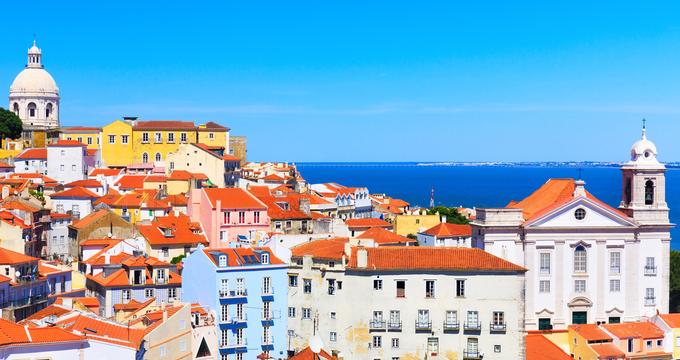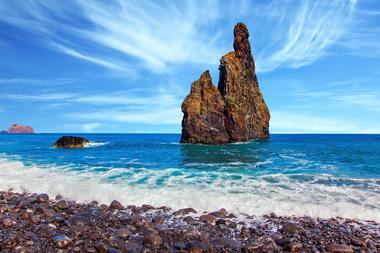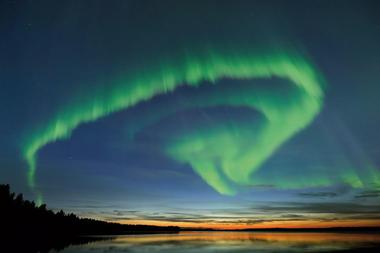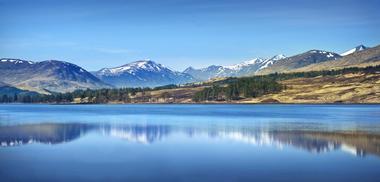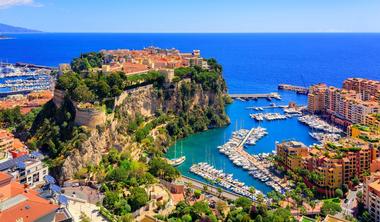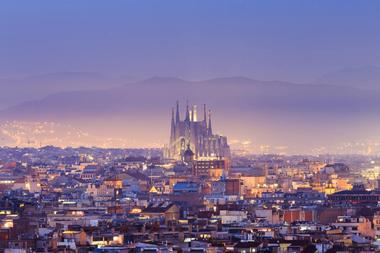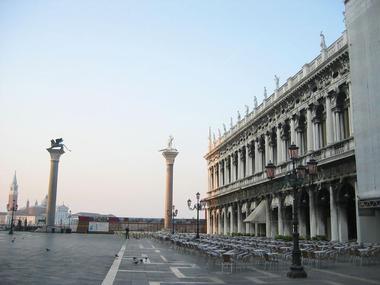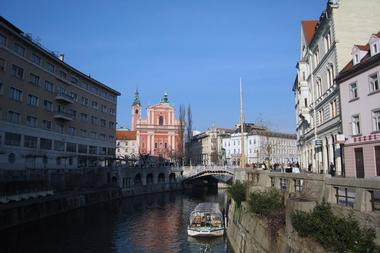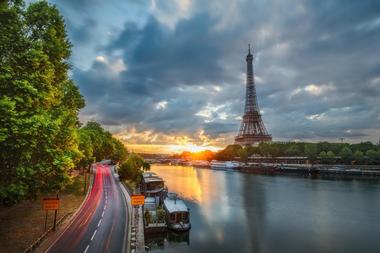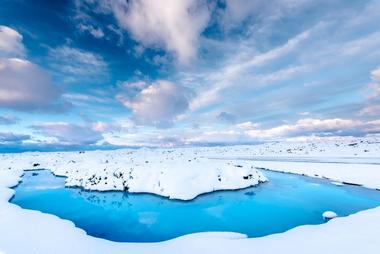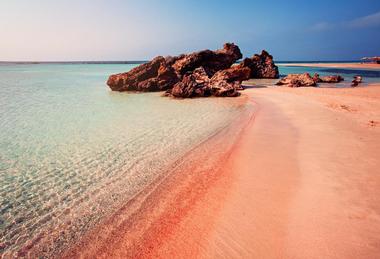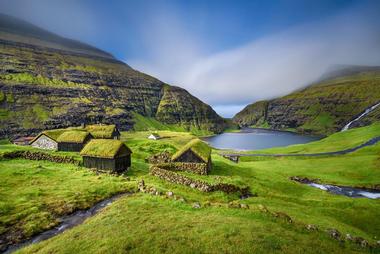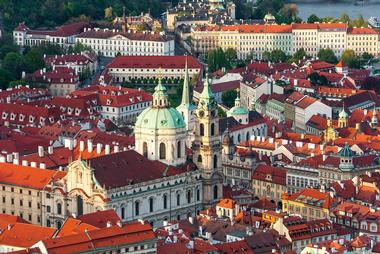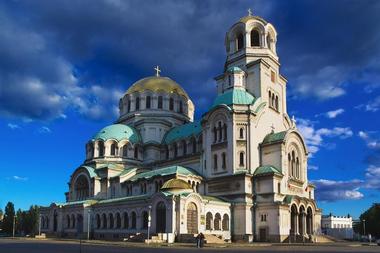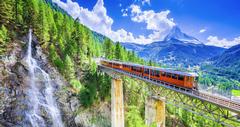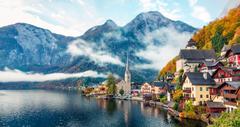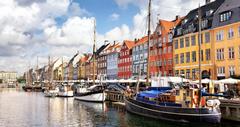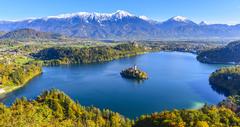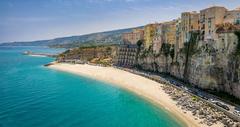Many couples dream of a honeymoon in Europe, and for a good reason since European destinations offer spectacular scenery, beaches, fun activities and delicious cuisine. Whether you are visiting just one country or planning a trip though many famous vacation spots, here are some of the top romantic ideas in Europe. While you are probably excited to create a busy itinerary full of museums and sightseeing tours, remember to leave some time for relaxing with a massage, room service and romantic moments together on the beach or on the balcony of your room overlooking a historic city.
What are the 15 Best Honeymoon Destinations in Europe?
The 15 Best Honeymoon Destinations in Europe according to local experts are:
- Portugal
- Finland
- Honeymoon Destinations in Europe: Scotland
- Monaco
- Spain
- Honeymoon Destinations in Europe: Italy
- Slovenia
- France
- Iceland
- Greece
- Faroe Islands
- The Czech Republic
- Sofia, Bulgaria
More Ideas: Llechwedd Slate Caverns
Located in Gwynedd, Wales, Llechwedd Slate Caverns is a tourist attraction preserving the historic Llechwedd quarry area, offering funicular railway rides, an interpretive center, a recreated miner’s village, and underground ride attractions. Though inquiries into the resources of the Llechwedd Farm area began as early as 1831, the Llechwedd slate quarry was opened for mining and production in 1846 under the supervision of mining entrepreneur John Whitehead Greaves.
History
Greaves had been a prominent figure in the operation of the Blaenau Ffestiniog slate quarries and had been influential in opening the Ffestiniog Railway, which connected the quarries’ resources to the nearby port of Porthmadog. Development of the Llechwedd quarry began in 1847, with the installation of an incline to connect the quarry with the Ffestiniog Railway at Dinas. Throughout the second half of the 19th century, the quarry grew to an operational peak of producing 23,788 tons of slate in 1884, with peak employment of more than 500 employees. Electrical power was introduced to the mines in 1890, making the quarry the first in the area to utilize hydroelectric power generation. While production at the quarry continued steadily throughout the First and Second World Wars, the demand for slate as a resource fell steeply in the 1960s and supplemental income became needed to continue operation of the quarry as a viable business model.
In 1972, Llechwedd Slate Caverns was opened to the public as a tourist attraction, showcasing the history of the quarry as a historic resource for the Llechwedd community. Originally operating under the name “Quarry Tours,” the attraction first offered funicular rides for tourists to travel underground and see the mines as part of guided tours. The original Miner’s Tramway ride was closed in 2014, but a Deep Mine funicular still operates today. Substantial renovations were made to the attraction in 2014, including the addition of an interpretive center, miner’s village, and underground ride attractions.
Permanent Attractions and Tours
Today, the Llechwedd slate quarry is still operated on a limited mining-operations basis, owned and operated in conjunction with the nearby Votty and Bowydd, Maenofferen, and Rhiwbach quarries. Open cast mining techniques are utilized at all four of the quarries, though the tourist attraction serves as the primary means of income for the company. As a family-friendly entertainment park and living history museum, Llechwedd Slate Caverns has been named as one of the top ten visitor attractions in the North Wales area by the North Wales Tourism board and is the winner of a number of major regional tourism awards.
Several guided tours of the mining quarry areas are offered for visitors, including a Deep Mine Tour, which takes participants 500 feet down into the mine’s underground area on a funicular car railway traveling at a gradient slope of 30 degrees, the steepest passenger railway of its kind anywhere within the United Kingdom. Light projection technology and enhanced-reality multmedia designed by Eurodisney is featured throughout the ride, showcasing the history of the quarry, its founder, and the stories of its workers. A half-hour walkthrough tour is offered at the end of the ride’s descent, traveling through a number of the mines’ chambers and tunnels. Tours are offered every half hour throughout the day during park operating days and are available in Welsh and English. Other tour opportunities include a Quarry Explorer off-roading guided tour in a 4x4 military vehicle, a Slate Workshops Tour, which allows participants to try their hand at slate splitting, and a Walk In The Footsteps Tour, which takes participants on a walking excursion through mine areas. Specialized curriculum-incorporated tours are also available for primary and secondary school student groups.
Other attractions at the facility include an interpretive center, which documents the history of slate mining in Wales and the operation of the Llechwedd quarry through a variety of interactive exhibits and multimedia experiences, and a recreation of the original miner’s village at Llechwedd, which allows visitors to explore traditional building replicas and experience the daily lives of miners in the 19th century. Several underground ride attractions were added to the park in 2014, including a Bounce Below underground trampoline, the largest of its kind in the world, a Zip World Caverns underground wire course, and a mountain biking track area. An onsite cafe area offers traditional Welsh dishes using locally-sourced ingredients, including slate-cavern aged cheddar from South Caernarfon Creameries, while a recreated quarryman’s pub serves adult beverages from Great Orme and Purple Moose Breweries. An onsite gift shop also sells a variety of products using slate sourced from the quarry’s mines, including wine racks, coasters, tea lights, and key rings.
A470, Blaenau Ffestiniog LL41 3NB, UK, Phone: +44-17-66-83-03-06
You are reading "15 Best Honeymoon Destinations in Europe " Back to Top
More Ideas: Great Orme Tramway
Located in Llandudno, Wales, the Great Orme Tramway is the United Kingdom’s only cable-operated classic street tramway, offering scenic rides from Llandudno Victoria Station to the Great Orme headland seasonally between March and October. The history of the Great Orme Tramway dates back to the late-19th century, with the passing of the Great Orme Tramways Act of 1898, which authorized the construction of a cable car route to transport passengers and goods along the Great Orme limestone headland of Wales’ north coast.
History
Construction on the cable car project began three years later in 1901, with the route’s first lower phase opened in the summer of 1902 and its second upper portion opened the following July. Seven cars initially served the route, which was used for the transport of local passengers, the haul of merchant and industrial goods, and as a processional route for coffins ready for burial at the nearby St Tudno’s churchyard. In addition to the route’s Great Orme terminus and its original Halfway Station, an additional station was constructed in 1904 to serve as an origin point along Church Walks, built on the former site of the Victoria Hotel. After several decades of successful operation, the line saw multiple hardships in the 1930s, with a fatal 1932 derailment accident that killed two people and ensuing financial difficulties as a result of its tarnished reputation. In 1935, the line was sold to the Great Orme Railway corporation, which revamped the route with improved safety and security measures. The line was sold several more times throughout the 20th century, first in 1949 to the Llandudno Urban District Council and later to the Aberconwy and Conwy County Borough Councils. The line’s steam power source was upgraded to electric operation in 1958, and in 1999, the European Union granted £1 million in funds for the complete renovation of the line’s Halfway Station, control room, and power plant and implementation of an induction-loop system to replace its outdated wire telegraph system.
Routes and Attractions
Today, the Great Orme Tramway is recognized as a landmark of the North Wales community, carrying more than 200,000 annual passengers from its origin at Llandudno Victoria Station to its terminus at the top of the Great Orme headland. As the United Kingdom’s only extant cable-operated tramway system, the route is divided into two separate sections that serve as independent funicular systems, converging at Halfway Station. The route climbs approximately one mile up into the land of the Great Orme County Park and Nature Reserve, offering passengers dramatic views of United Kingdom landmarks such as Blackpool, the Isle of Man, and the Lake District.
The Great Orme Tramway operates annually between late March and late October, with exact operating dates dependent on weather and staff conditions. Visitors may purchase tickets seven days a week, with trains operating daily between late morning hours and early evening work commutes. Three main stops are offered along the route: one at its origin point at Llandudno Victoria, one at Halfway Station, and one at its Great Orme Summit terminus. Though three other stops were constructed throughout the 20th century at Killen’s Hill, Ty’n-y-Coed, and Black Gate, they are not currently in use by the route. The route’s lower section operates at a 26.15% gradient along a single track, with its upper section ascending a less-steep 10% gradient along a double track. The route’s unique operating structure closely resembles San Francisco’s cable-car system and the Lavra, Bica, and Glória funiculars of Lisbon along its lower section, as it rides along a public street route. As the route operates as two independent funicular car systems, all passengers must exit trams at Halfway Station and switch routes.
Visitors may exit at the Halfway Station terminus to visit nearby tourist attractions such as the Bronze Age Copper Mines, the Iron Age Fort, and the historic St. Tudno’s Church building. Once visitors reach the route’s summit at Great Orme, a number of attractions are also easily accessible from the Great Orme Summit station, including the Great Orme County Park Visitor Centre, which serves as the entrance point for the Great Orme County Park and Nature Reserve. A Summit Complex offers visitor snacks and refreshments, and an outdoor playground and picnic area is provided for families.
Ongoing Programs and Education
In addition to standard tramway admission tickets, group rates for the route are available, including special rates for school groups. Special group tours of Great Orme County Park and the copper mines near Halfway Station are available upon request for small groups and organizations. All tours must be booked directly through the Great Orme Tramway by phone or email in advance, and scheduled tour times are honored on a first-come first-served basis once the group has arrived and space on a tram is available, as the route is a public transit route with varying daily ridership levels. Visitor coaches may drop tour groups off at Prince Edward Square near Llandudno’s Pier, located approximately five minutes from the route’s origin station.
Victoria Station, Church Walks, Llandudno, North Wales, LL30 2NB, Phone: 0-14-92-57-78-77
You are reading "15 Best Honeymoon Destinations in Europe " Back to Top
More Ideas: National Museum Cardiff
The National Museum Cardiff is in Cardiff, Wales. The museum offers visitors a variety of events and exhibitions whatever interests they may have. The National Museum Cardiff is positioned in the middle of the civic center in Cardiff. It is home to several temporary exhibitions along with the national art, and natural history and geology collections of Wales.
About the National Museum in Cardiff
The museum’s art collection is one of the best in Europe. It contains five hundred years of drawings, paintings, silver, ceramics, and sculptures, not only from Wales, but from all over the world. The National Museum at Cardiff is home to one of Europe’s finest Impressionist Art collection.
The museum also contains exhibits that chronicles the evolution of life throughout Wales natural history. It begins with the Big Bang in space and takes visitors on 4,600 million-year voyage. The journey brings visitors in contact with wooly mammoths and dinosaurs through it galleries. The natural history is on display beginning with the seashore and ending with the mountains.
Exhibits
The Natural Museum Cardiff has a variety of exhibits to interest the whole family.
Art Galleries- The museum’s art galleries are home to one of the best art collections in Europe. Together the three sets of galleries chronicle more than five hundred years of art.
· Impressionist and Modern Art- This gallery set includes one of the finest collections of Impressionist art in Europe. It chronicles art beginning in the nineteenth century to modern day. These galleries highlight the role of French art in the Impressionist and Post- Impressionist movements. Visitors will also examine Sir William Goscombe John who was the leader of the “New Sculpture” movement, and played a key part I the cultural revival in Wales in the late nineteenth century.
· Historic Art- The galleries in this set chronicle historic art beginning in the year 1500. It examines art in Italy, the Netherlands, eighteenth century Britain, Victorian Britain, and Wales. There are also galleries devoted specifically to Welsh artists, nature paintings, portraits of important Welsh citizens from 1800-2000, art reflecting the Welsh landscape.
· Applied Art- The galleries that are part of this category include galleries on Chinese porcelain from the eighteenth century, jade sculptures from China, porcelain and pottery from Wales, contemporary ceramic crafts, silver, one of the best ceramics collections in the world.
The Evolution of Wales- The galleries included in this exhibition chronicle the evolution of life in Wales beginning with the Big Bang in space and covering 4,600 million-years. Visitors to these galleries will travel through different environments and climates of Wales as it evolved and moved across the planet’s surface. As visitors move through the exhibition they will learn how evolution happens and examine fossils of animals from different time periods. Skeletons of ancient animals and a reconstructed environment of South Wales two-hundred million years ago are on display. The galleries include dinosaur footprints and skeletons. These galleries show gravity, water, ice, wind, and the planet’s interior heat play a role in shaping the Earth. Some of the climates on display include deserts, tropical swamps, glaciers, coral reefs, and volcanoes. It is the biggest exhibition the museum has ever put on, covering more than one thousand square meters of space.
Natural History- The galleries in this exhibition take visitors on a journey from the seashore to the forest, and end at the mountains. It chronicles the natural history of Wales. Skeletons of the Basking Shark, Humpback Whale, and Leatherback Turtle can be found in the gallery designated the seashore of Wales. The Diversity of Life gallery features a large variety of wildlife from the bug-eating pitcher plant to the Snow Leopard.
Educational Opportunities
The National Museum Cardiff offers several educational opportunities for teacher and students alike.
Foundation Phase to Post-16 Education- The museum offers a variety of educational programs, events, and exhibits to enhance student learning experiences at every level.
Welsh Baccalaureate- The Natural Museum Cardiff offers resources and activities for the Enterprise and Employability Challenge and the Global Citizenship portions of the Welsh Baccalaureate.
The First World War Education Project- The National Museum Wales and The National Library of Wales are partnering to lead a project for create resources to celebrate the anniversary of the First World War for schools. Items from both organizations’ collections to generate digital teaching resources.
Special Events
The National Museum Cardiff puts on temporary exhibitions throughout the year.
Swaps: Photographs from the David Hurn Collection- The collection of photos is made of about 700 pictures by important twentieth and twenty-first century photographers.
Bacon to Doig: Modern Masterpieces from a Private Collection- The pieces in this collection came from famous artists of the twentieth century. Many were bought before the artists were famous.
National Cardiff Museum, Cathays Park, Cardiff, CF10 3NP, Phone: +44-0-30-01-11-23-33


